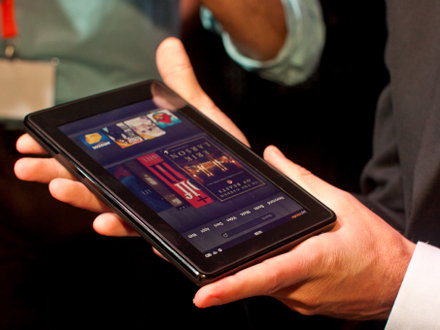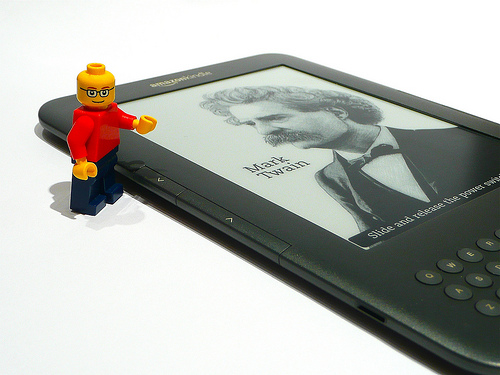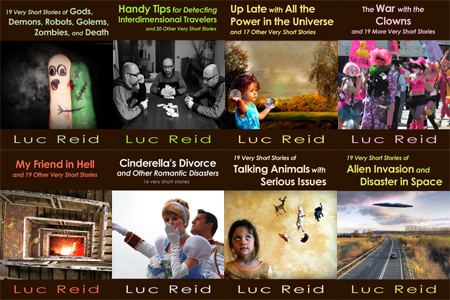Here’s a guest post from Judson Roberts, author of the Strongbow Saga trilogy of Viking novels. Jud had given his assessments of these two eReaders in an e-mail discussion, and on my request kindly agreed to put his observations into a blog post.
You can see a larger version of any image by clicking on it.
Two years ago, digital books, or e-books, were something that relatively few people had any personal experience with. Although e-books had actually been around for a number of years, they’d never really caught on. But in mid-2010, that changed. In the months leading up to Christmas, Amazon significantly reduced the price of its Kindle e-book reader. Sales of the device took off, and in January, when millions of new Kindles became activated, the rate of e-book sales exploded. It has been growing ever since.
E-books can be read on a wide variety of devices, including personal computers, tablet computers, smartphones, and dedicated e-book readers. But the tremendous growth in e-book sales that has occurred in the United States (the rate of e-book sales in overseas markets has not yet seen the same level of dramatic growth) has been, to a large extent, driven by repeated price reductions over the past year of the two most popular and widely used dedicated e-book readers: the Amazon Kindle and the Barnes & Noble Nook, particularly the top of the line Color Nook. In this column, I will offer my personal opinion and experiences with both devices (Why, you might wonder, would I own both devices? I’m an author and have published some of my books as e-books, so I use both devices in part to review my e-book editions prior to releasing them.).
First, their similarities. Neither device is intended by its parent company to be an open source e-reader. By that, I mean that each device is tied to its parent company’s store, and designed to most easily access e-books sold through that store. Unless the user is willing to undertake some work-around steps (which admittedly are not that difficult to do, and which I’ll address in more detail below), a Kindle can easily load and read only Kindle e-books purchased from Amazon; a Nook only Nook books purchased from Barnes & Noble. The actual process of purchasing an e-book is fairly similar for both devices: either on a computer, or directly from the device, you access the parent company’s website, select a book, purchase it (for the devices to be activated when purchased, both require an active account with the parent company), and the book will be sent to your device.
In addition to the parent company’s e-books, it is possible to load documents in various formats, including Microsoft Word and Adobe PDF, onto both devices. The Nook also accepts EPUB files, the mostly widely used e-book format (which Nook e-books are in), and the newer Kindles accept Mobi format files, another e-book format. Thus, if a user acquires or already possesses e-books in the PDF format, they can be manually loaded on either the Kindle or the Nook. Additionally, non-B&N EPUB e-books can be manually loaded onto the Nook, and non-Amazon Mobi format e-books can be manually loaded onto the Kindle. For the present, at least, Kindle readers do not accept EPUB files or books, and Nook Color readers do not accept Mobi files or e-books, or Amazon’s proprietary Kindle format (which is derived from the Mobi format).
Documents and non-Nook e-books are loaded onto the Nook by connecting it via a USB cable (supplied with the device) to a personal computer, and transferring or copying them from the computer to the Nook. Documents and non-Kindle e-books may be loaded onto a Kindle using the same procedure, but Amazon also offers a far easier procedure: each Kindle is assigned an email address, and some formats of documents can simply be attached to an email sent to that address, after which they will appear on the device within minutes. [Luc adds: there’s a free way to do this if you’re willing to receive your documents or eBooks through WiFi only and not through Amazon’s cellular Whispernet by sending it to a @free.kindle.com address: see your Kindle documentation for details. Also note that purchases from Amazon for the Kindle are automatically downloaded to the device.]
The Nook is WiFi only, which means that it cannot connect to the B&N website and acquire and load new books unless it is connected to a WiFi network. The Kindle is available in two different connectivity options: WiFi only, or an always-available connection via 3G cell phone networks. The latter does not require any additional charge or plan for network access and use, but the 3G versions of the Kindle device are more expensive than the WiFi only versions. Both devices, when connected, offer some degree of web browsing capability.
The two devices differ most markedly in how they operate. The Color Nook is a touchscreen device that looks much like a tablet-style computer, and runs on a version of Google’s popular Android operating system, which is widely used in non-Apple smartphones and tablet computers. Indeed, Barnes & Noble has even advertised the Color Nook as the least expensive Android tablet available. That is a dangerous claim to make, although not because of the price. Compared to other Android devices, the Color Nook is either extremely underpowered or its capabilities have been grossly limited by Barnes & Noble’s restrictive control over the device.
![]()
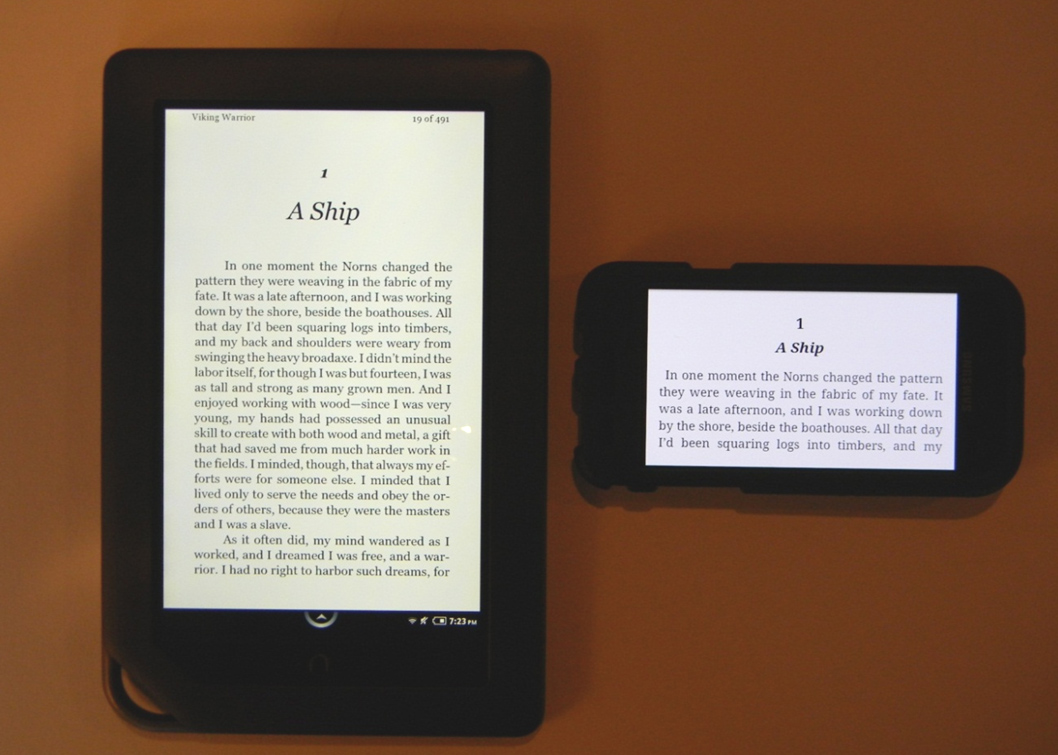
The B&N Color Nook versus the free Amazon Kindle app on a smartphone
The Nook versus smartphone comparison raises another flaw with the Nook. One of the great things about smartphones is the numerous apps you can load and use on them. Their variety and functions are almost endless, and there are countless Android based apps available. As an Android device, the Nook should be able to use them, too. But no—Barnes & Noble does allow a few apps, sold through their store, to be installed and used on the Nook, but the selection is limited and is strictly controlled by B&N, in their own inimitable style. For example, Epicurious is an excellent cooking website with numerous recipes that are well organized, easy to search, and are even rated by users. There is a free Epicurious app available for Android smartphones—my wife loves it, and uses it all the time. Barnes & Noble now offers the Epicurious app through their store for the Color Nook, too—but they charge $5.99 for an app that is available free for other Android devices.
The actual Kindle e-book reader is a completely different kind of device than a touchscreen Nook or smartphone. It is controlled entirely by a manual keyboard below the screen and by various manual buttons, all of which are clearly labeled as to what function they perform. While the result may not present as sleek and elegant an appearance as the Color Nook, it works well and is easy to use. If I want to access the menu, I simply press the button labeled “Menu,” then navigate the options than appear onscreen using the multi-directional navigation and select button. If I want to go to the home page, where all books currently loaded on the device are listed and accessible (and from where I can access other Kindle books I’ve purchased, but which are not currently loaded on the device), I press the “Home” button. If I wish to advance to the next page, or go back to the previous one, I press the forward or back buttons located on both sides of the device. The Kindle is like a good tool whose design is based on considerations of function first, and appearance second. I liken it to a hammer that so perfectly fits your hand and is so well balanced that you strike true with it every time. It’s a personal preference, but give me function over flash.
![]() Kindle
Kindle and
Nook e-book versions, as well as in
print editions).
Like this:
Like Loading...

Jun 29, 2011
Today’s guest post about Google Books is by Judson Roberts, author of the Strongbow Saga. You can find him on Amazon.com, and his Web sites are StrongbowSaga.com and JudsonRoberts.com.

Jud says: I don’t actually hate all things Google. Google is still the Internet search engine I use more than any other, I love Google maps and Google Earth, and the free Google Navigation app on my Android phone is a wondrous thing, indeed.
But I am learning to hate Google Books. Let me explain.
I’m an author and, like many other authors, have been, over the course of the past year, republishing, as self-published books, some of my titles that my original publisher had taken out of print. So far, that’s been a mostly very pleasing project. The Amazon Kindle e-book versions are doing very well–much better than they ever did when published by HarperCollins, their original publisher–and the new print-on-demand print editions are selling steadily, too. They’re now for sale as Nook books at Barnes & Noble (and that has been a much less happy experience, but the problems with B&N I’ll leave to a separate rant). So I decided my next frontier would be Google’s relatively new e-book store.
I think I can honestly say that I have never–NEVER–dealt with a more user unfriendly operation. How can an organization that prides itself on creating intuitive, user friendly programs and applications have created such a monster?
An author cannot get to the Google e-book store, to place his books up for sale there, unless he first becomes a “partner” with Google Books. What does that mean? Well, I confess that I’m not totally sure. There are pages and pages and pages of legal mumbo-jumbo you have to wade through and agree to. I’m a lawyer, and usually actually read that kind of thing, but the Google Books disclaimers, agreements, etc., etc. left my head spinning. Hopefully I have not granted Google exclusive rights to the first born child for the next three generations of my family.
Then, you have to give Google Books a copy of the print version of your book. That’s the heart of their whole plan: Google is trying to create a vast digital library of every book in print, and many now out of print, and if you want to sell e-book editions through Google, you have to give them the right to add your book to their digital library (what rights do they have over it once it’s there? I don’t know, which is scary). One option is to mail them a print copy, so they can disassemble the book and scan it into their database, but the alternative they strongly encourage is that you save them any effort by just uploading a PDF version of the book.
Okay–I do want to place my e-books in the Google e-book store, so I did. Or at least I tried. But the Google Book Uploader would not work for me. After an hour or more of digging through multiple layers of “help” pages, I discovered why. Google requires you to rename any book files you submit according to their internal naming conventions. If you do not, their Uploader will not accept them.
Think about that for a minute. And to help you, let me explain how the similar process occurs with Amazon. You enter the relevant data such as title, author, price, etc., then click on the file(s) to be uploaded to give Amazon the actual text, cover image, etc. Since you’re uploading the file within the framework of all the other data about the book you’ve provided, there’s really no possibility that the book file(s) will somehow get lost. But with Google, after you enter the title, author, etc., you also have to correctly rename any book files you upload, or they will not go through. It perhaps would be only a minor irritation if Google simply told you that up front, but when you have to dig through layers of unhelpful “help” pages to discover that fact, it’s infuriating. Plus, the Uploader guidelines say check back regularly, and within a week they’ll let you know whether your upload was successful, or you have to try again. I’m still in Google Books limbo.
And then there’s the pricing issue. Google’s e-book store sells internationally, as does Amazon’s Kindle store. With Amazon, all an author has to do is set the U.S. price in dollars, and the price in other currencies, such as British pounds or Euros, will be automatically set to correspond. With Google, you have to “activate” each individual territory, and part of that process includes setting the price there. You can either accept Google’s default option, which will set the e-book price at 80% of the print edition’s price–a price I personally feel is too high for e-book editions in most cases–or you have to manually set the price in each given territory’s currency. Thank you so much, Google, for being so author-friendly and helpful.
Photo by iansand
Like this:
Like Loading...



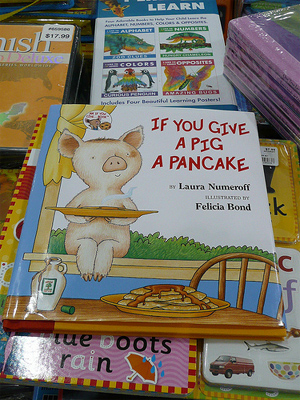 Sandra Tayler, a friend from
Sandra Tayler, a friend from 